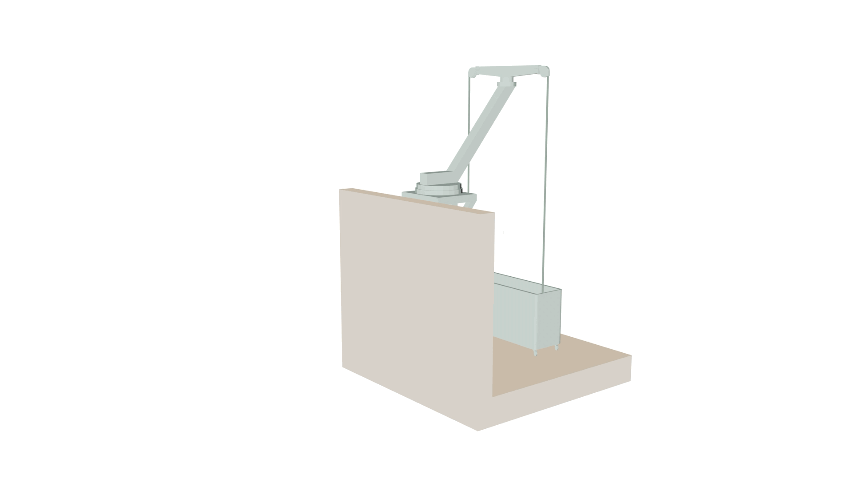In the bustling urban landscapes of today, maintaining the exteriors of high-rise buildings poses significant challenges. Whether for routine maintenance, window cleaning, or renovations, ensuring safe and efficient access to building facades is paramount. Among the various solutions available, the Davit System stands out as a versatile and reliable choice.
What is a Davit System?
The Davit System is a sophisticated mechanism designed to provide access to building facades where traditional methods may be impractical or unsafe. Consisting of essential components such as a mast, jib, boom, and trolley, this system allows for the suspension of work platforms, single-user cradles, and bosun’s chairs. Its flexibility in accommodating different tools makes it ideal for a wide range of maintenance tasks.
Applications of the Davit System
The Davit System finds its niche in buildings with high parapets and limited roof space, where installing a complex Building Maintenance Unit (BMU) might not be feasible. It offers a cost-effective alternative while ensuring the safety of maintenance personnel. Compared to other systems, the Davit System is particularly advantageous in urban environments where space constraints and access requirements are critical considerations.
Types of Davit Systems
There are primarily two types of Davit Systems: fixed and traversing. Fixed Davit Systems are stationary and installed at strategic locations around the building perimeter, providing consistent access points. Traversing Davit Systems, on the other hand, are mounted on a rail structure fixed to the inner side of the parapet. They enable movement along the facade, eliminating the need to relocate portable davits frequently.
Key Features and Components
The Davit System’s components are typically constructed from durable materials such as aluminum alloy, ensuring strength and longevity. The mast and jib are designed to rotate on specialized collars, allowing for precise positioning of the work platform over the parapet. A captive trolley facilitates smooth movement along the jib, enhancing operational efficiency and safety.
Advantages of Using a Davit System
Safety is paramount when it comes to facade access, and the Davit System excels in this regard. By providing secure anchorage points and controlled movement mechanisms, it minimizes the risks associated with working at heights. Moreover, its modular design and ease of installation contribute to cost-effectiveness, making it a preferred choice for building owners and facility managers alike.
Installation and Maintenance
Installing a Davit System involves meticulous planning and adherence to safety standards. Qualified technicians assess the building’s structural integrity and install the system according to manufacturer specifications. Regular maintenance checks, including inspections and lubrication of moving parts, are essential to ensure continued reliability and compliance with safety regulations.
Compliance and Standards
The Davit System conforms to stringent international standards such as EN1808 and Machine Directive 2006/42/CEE. These regulations ensure that the design, installation, and operation of the system meet rigorous safety requirements, providing peace of mind to stakeholders regarding worker safety and legal compliance.
Takeaway
The Davit System represents a pivotal advancement in building maintenance technology, offering a safe, efficient, and cost-effective solution for accessing building facades. Its versatility and compliance with international standards make it indispensable in modern urban environments. For building owners and facility managers seeking reliable facade access solutions, investing in a Davit System ensures both operational efficiency and worker safety.

